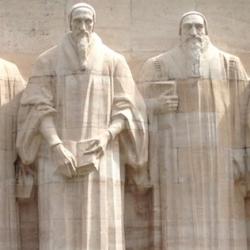Andrew Pettegree (Reformation and the Culture of Persuasion, 201-2) describes the post-Reformation efforts to cultivate a sense of brotherhood and solidarity among Protestant Christians who had rejected medieval rites and practices of kinship. He quotes a “disenchanted defector” who denied brotherhood “to all who did not adhere to their faction,” adding that “such naming became a common characteristic of all the future separatist groups that eventually repudiated the broad church of the English settlement.”
He observes that “the traditional sacraments played a relatively modest role in defining the new Protestant family. Baptism was an important rite of belonging but took place only once, and was in England and the Netherlands available to all children of the parish community. It did not define commitment to the confessing congregation under the discipline, as had been intended in the original Reformed church orders. The churches also exhibited a considerable difference in practice as to how far the extended kinship relationship of godparenting should be practised: in some Reformed traditions it was effectively repressed. The Eucharist, rescued from the pollution of the Roman Mass, also played a much more modest role in defining the godly community than might have been anticipated by the reformers. It was infrequent, often only quarterly, and only in the churches that achieved a real unity between the godly people and the parish (such as Scotland and the Huguenot towns of southern France) could it function as a rite of communal self-identification. In the Netherlands, as we have seen, only a tenth of the population aspired to full communicating membership of the church: a godly core, but not in any way representative of the totality of the Christian people.”
Instead, the godly people were identified in two ways: “firstly, to a community of saints that recognized no limits of locality, nation or time. This was a congregation that united the godly both with the saints departed and with those in other godly nations. Simultaneously, however, the Protestant churches developed an alternative vision of a godly people, that united a broad cross-section of the people who felt a broad commitment to the common purpose of church and nation, irrespective of whether they also adhered to the core of the confessing church. It was this broader church of the godly nation that would sustain the cause through the crises that marked the last decades of the sixteenth century” (202).










